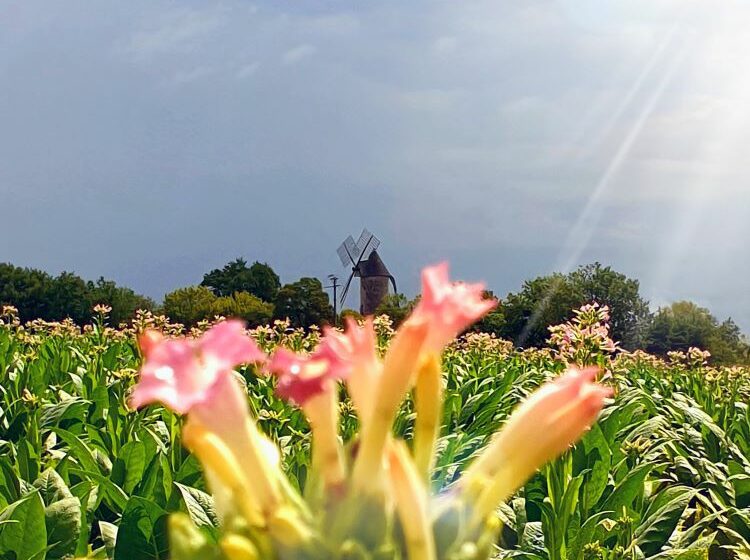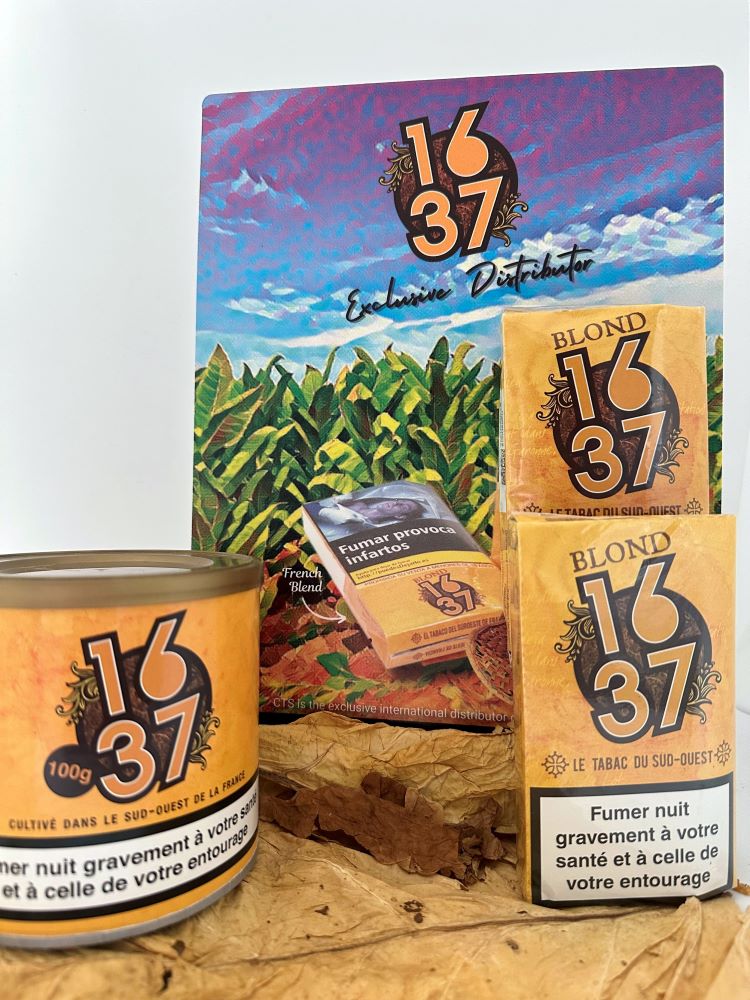A Taste of ‘Terroir’
- Also in TR Print Edition RYO/MYO
- November 1, 2023
- 0
- 8 minutes read

Photos: CTS

With its origin-focused approach, CTS has become a successful niche player in the French RYO category.
By Stefanie Rossel
“Shrinking” is the first word that comes to mind when thinking about the French tobacco sector. According to Statista, French tobacco sales are expected to decline by almost 1 percent annually between 2023 and 2028. In 2022, the tobacco market in France experienced its strongest value decline in a decade.
With the country’s last cigarette factory in Corsica closing this December, cigarette manufacture in France will come to an end. Due to the phaseout of EU tobacco subsidies in 2006, the area dedicated to tobacco cultivation in France has decreased as well—from 3,149 ha in 2016 to 1,205 ha in 2021.
Sadly, the only part of the tobacco landscape that continues to flourish is the illicit cigarette trade. According to a KPMG study commissioned by Philip Morris International, illegal smokes represented 32 percent of the French tobacco market in 2022.
However, this dark environment conceals some remarkable success stories.
One of them has been written by Collaboration Traditab Santele (CTS), an alliance of Traditab, a company run by small tobacco producers in southwestern France, and Santele, a Flemish family-owned manufacturer of traditional Belgian rolling tobacco.
Considering the pressures from increasing regulation, the two companies felt it made sense to join forces. Traditab provided the raw materials and tobacco cultivation knowledge; Santele contributed roll-your-own expertise and manufacturing facilities.
Established in 2016, CTS today is a medium-sized enterprise headquartered in Belgium with offices in France and Spain that currently manufactures and markets four brands of RYO tobaccos, focusing on the concept of “terroir.” The French term is used to describe the environmental factors that affect a crop’s phenotype, including unique environmental contexts, farming practices and growth habitat.
CTS’ Vasconha RYO brand, an American-blend type, is made of 100 percent tobacco cultivated by farmers in Gascony, the Basque Country and Aragon, traditional tobacco cultivating regions on both sides of the Pyrenees. Wervikse Tabak b34, a fine-cut dark blend, comes from Wervik, a historical tobacco-growing region in Flanders. The tobacco for Veramia, a Virginia blend, is cultivated exclusively in the western Spanish region of Extremadura, where tobacco has been grown since the 16th century.

Focus on Origin
The company’s bestseller is 1637. In October 2023, the product was the third-bestselling RYO brand in France. Made of French tobaccos grown in the southwest, its name alludes to the year when tobacco was first planted in the region. The brand was created in 2008 by Traditab at the initiative of a cooperative of small tobacco growers, Tabac Garonne Adour (TGA), that sought to improve the price paid for local tobacco growers.

Marketing began regionally, with an emphasis on tobacconists. “At that time, there weren’t many such products on offer, as organic tobacco products were popular,” says Anne-Marie Bracq, director of CTS France. “We started out with 20 tons of tobacco and grew step by step, explaining to tobacconists that if they choose to sell our products, they support their country’s growers.”
It’s a concept that works well in France, which takes pride in domestically produced cheese and wine varieties that derive their identities from clearly demarcated origins. The company has applied the same philosophy to the other two markets. In Spain, for example, it has a sales force of 17 people.
CTS works with 120 tobacco farmers in France, who are organized in the TGA cooperative and cultivate almost 300 ha in the region between Bordeaux and Lot-et-Garonne. The farms are small, with tobacco representing only one of a variety of crops, typically planted on 2 ha to 4 ha.
While in Belgium, CTS works with only one or two growers, it cooperates with 150 growers of a cooperative in Spain, which cultivates tobacco for CTS’ RYO brands on 550 ha.

“In France, tobacco growing is not as much a tradition as in Spain, and Burley is the main variety, with flue-cured Virginia [FCV] being more of a filler type,” explains Jerome Duffieux, director of Traditab. “Burley production is more mechanized whereas FCV production is more of a manual process in France. In Spain, where farms are bigger and more specialized in tobacco, it’s the other way around; Spanish FCV is more aromatic.”
Like Traditab, CTS aims to preserve a centuries-old regional tradition. “Our objective is to promote tobacco culture, which involves paying farmers an adequate price,” says Bracq. “This is also important in Spain. Extremadura produces 95 percent of Spain’s tobacco, accounting for 1,900 jobs, and provides €91 million ($95.83 million) to the region’s gross domestic product.”

Expansion Planned
The tobacco growers cooperating with CTS face a challenge shared by farmers in other fields of agriculture: finding successors when they retire. “Maybe it’s more difficult for tobacco because it’s difficult to promote from a health perspective,” says Bracq. “But we still have the problem of economic viability. At CTS, we are looking at ways to maintain tobacco cultivation, trying to develop a future for growers and [figuring out] how to support them economically. We are also running a program to find new farmers.”
CTS plans to expand its current portfolio by developing a new RYO brand, but it’s not easy, according to Bracq. Almost three years ago, France raised tobacco excise taxes to €6.61—substantially above the EU average of €3.34.
The government has continued raising RYO taxes since, thus eliminating the buffer function RYO usually plays between factory-made cigarettes and cheap illegal smokes. “A pack of 20 cigarettes now costs €11 and a 30-gram pouch of rolling tobacco €15 to 20,” explains Bracq. “The RYO segment is now declining more heavily than the cigarette market.”
CTS is presently also involved in a cigar project. “We are developing cigars that are made of tobacco from southern France and plan to launch them in the next three years,” says Bracq.

